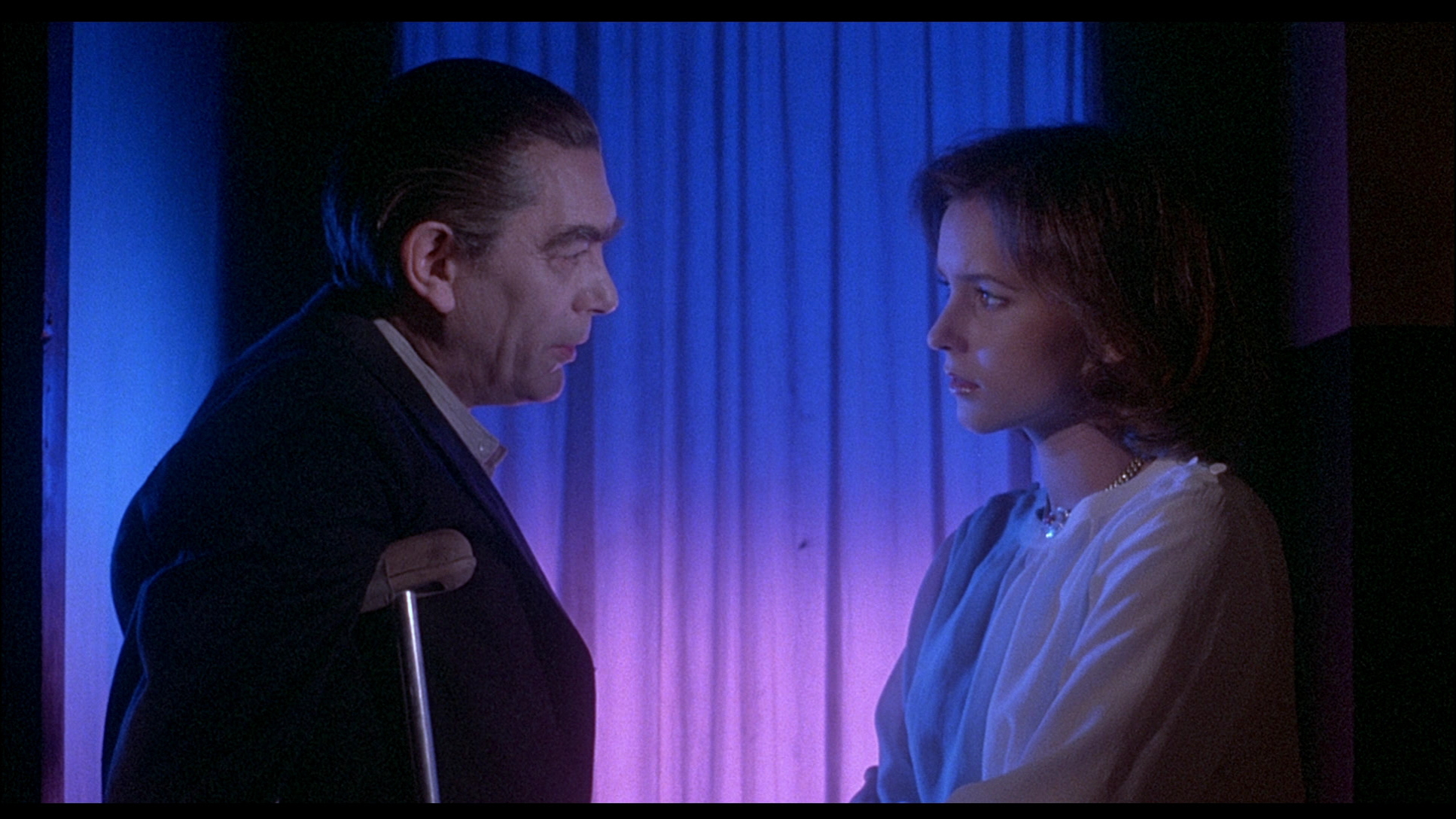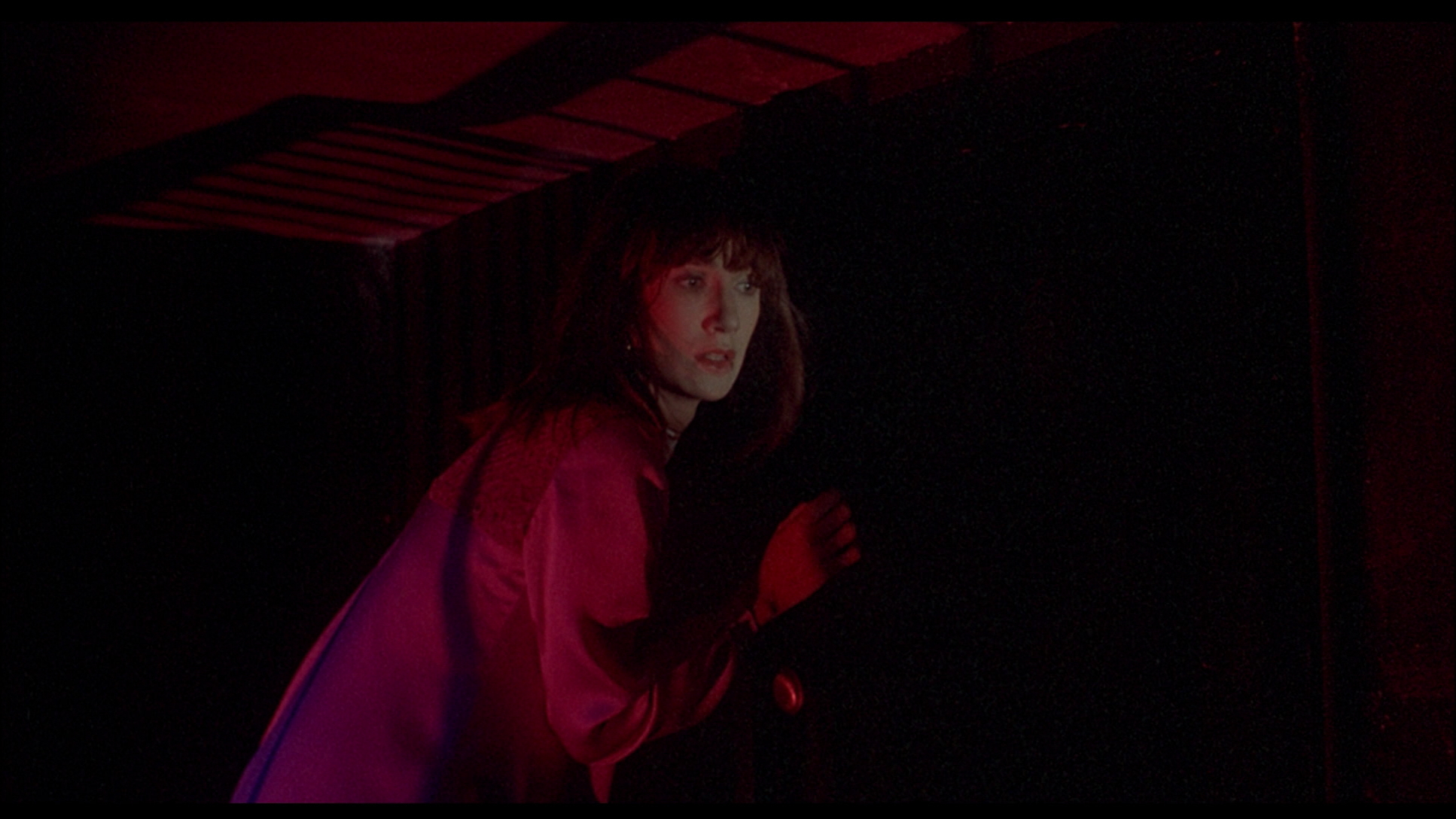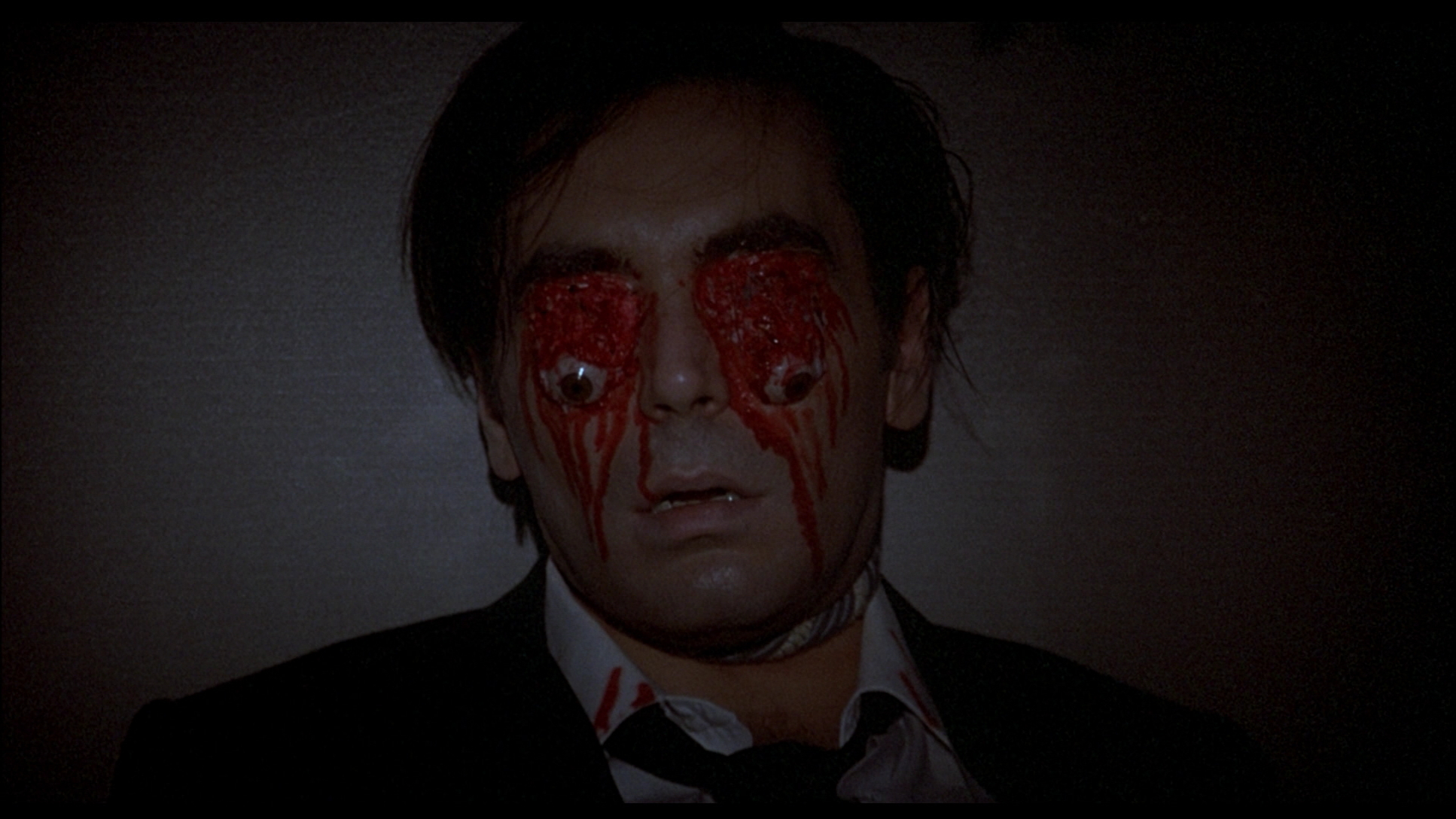
Color, 1980, 107m.
Directed by Dario Argento
Starring Leigh McCloskey, Irene Miracle, Eleonora Giorgi, Sacha Pitoeff, Alida Valli, Gabriele Lavia, Daria Nicolodi
Blue Underground (Blu-ray & DVD) (US R0 HD/NTSC), Arrow (Blu-ray & DVD) (UK R0 HD/PAL), Koch (Blu-ray & DVD) (Germany R0 HD/PAL), Wild Side (Blu-ray & DVD) (France RB/R2 PAL), King Records (Blu-ray & DVD) (Japan RA/R1 HD/NTSC), Fox (Italy R2 PAL), Anchor Bay (US R1 NTSC) / WS (1.85:1) (16:9) / DD5.1
Following 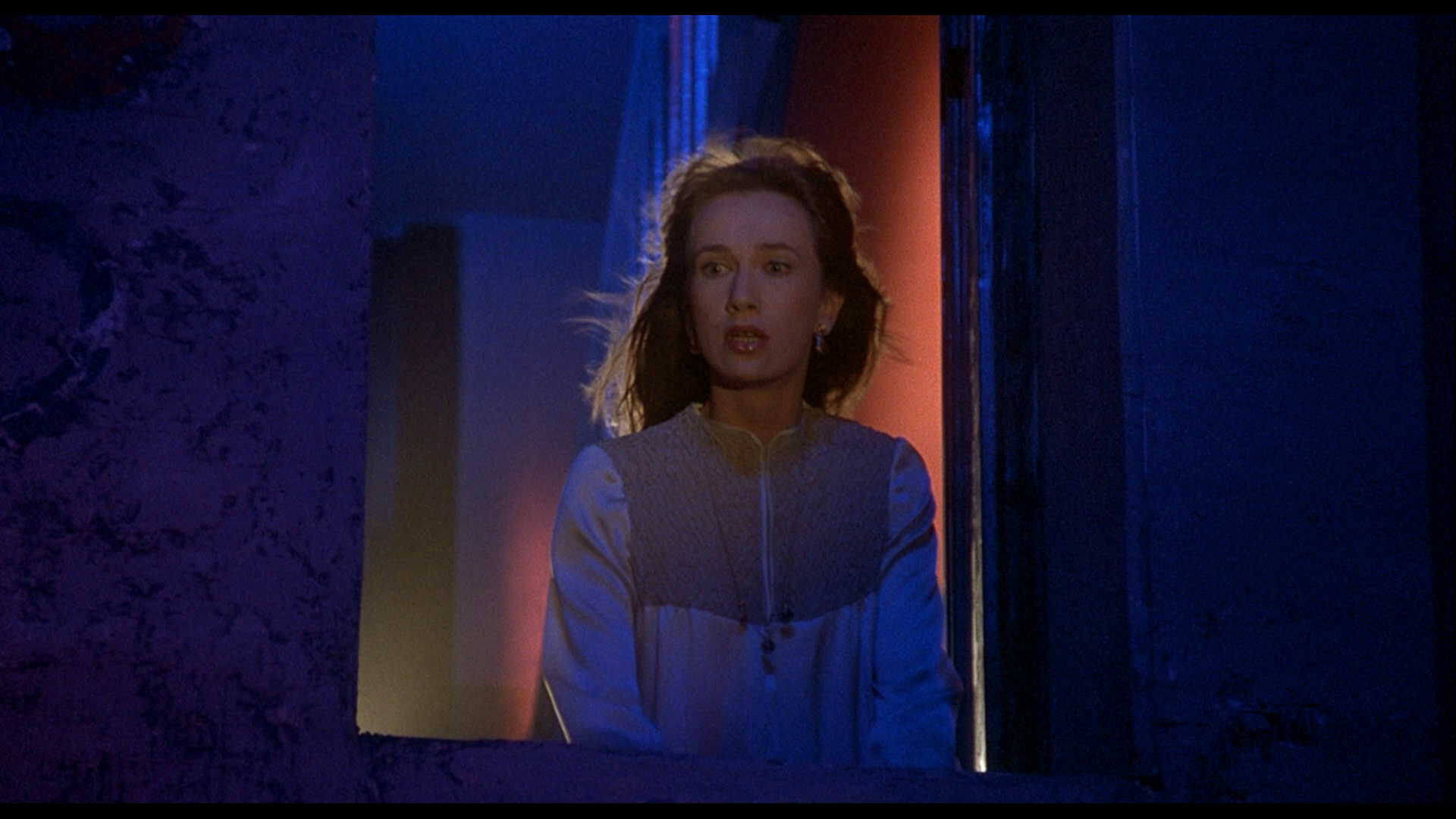 the worldwide success of his
the worldwide success of his 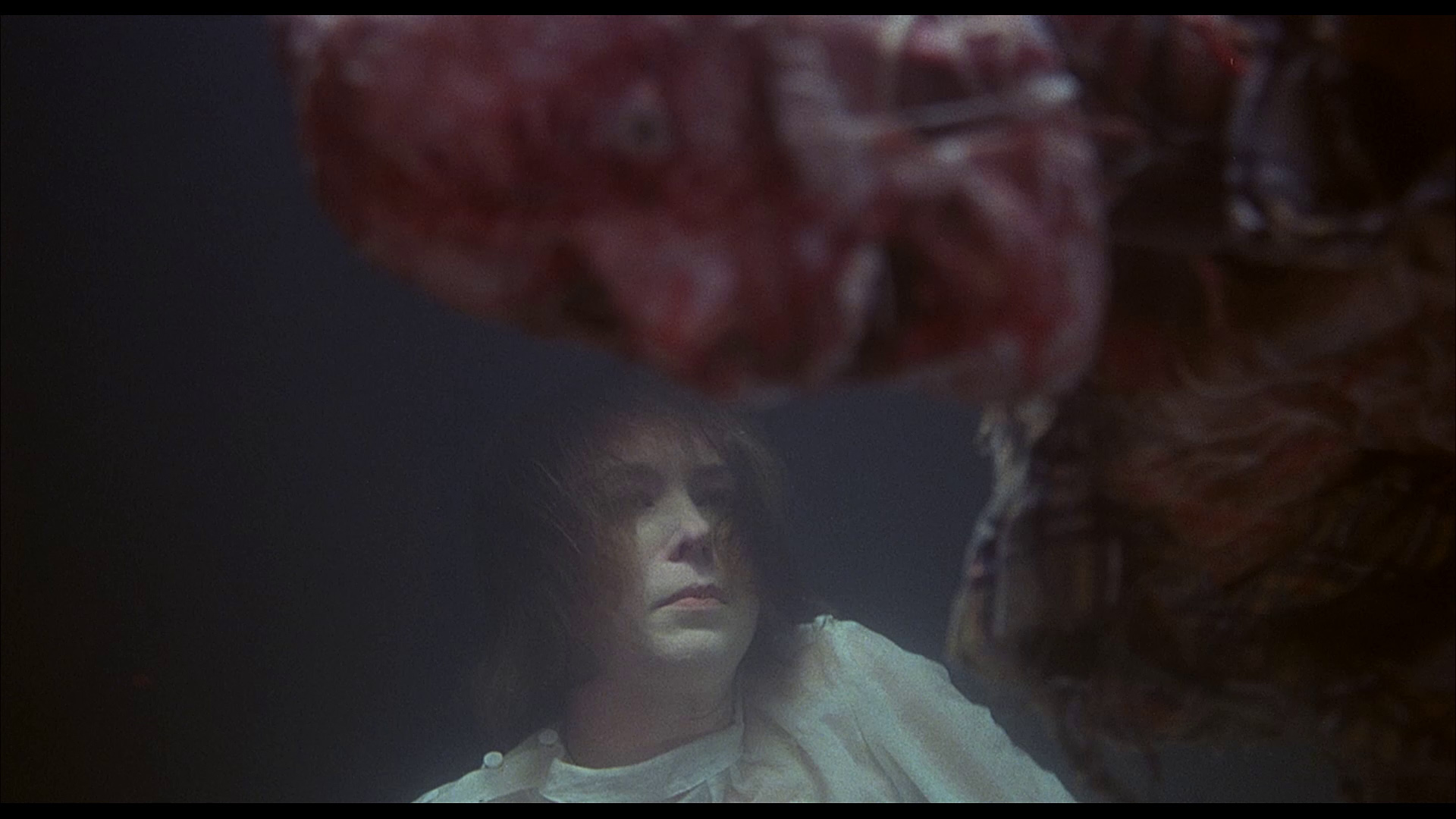 Gothic witch masterpiece Suspiria, director Dario Argento decided to create his first sequel by expanding that film's mythos into a transcontinental exercise in dark magic running rampant through the lives of several ill-fated characters. The result, Inferno, is a far more elaborate and challenging film that confounded 20th Century-Fox and remained unseen in the U.S. for nearly a decade. Nevertheless, it managed to gain a healthy cult following and is now regarded as one of the director's most important works.
Gothic witch masterpiece Suspiria, director Dario Argento decided to create his first sequel by expanding that film's mythos into a transcontinental exercise in dark magic running rampant through the lives of several ill-fated characters. The result, Inferno, is a far more elaborate and challenging film that confounded 20th Century-Fox and remained unseen in the U.S. for nearly a decade. Nevertheless, it managed to gain a healthy cult following and is now regarded as one of the director's most important works.
In New York, beautiful poet Rose Elliott (Miracle) acquires an obscure Latin book called The Three Mothers, written by an alchemist named Varelli who has broken his vow of secrecy to tell of a trio of malignant supernatural sisters who use their powers to spread evil from their mystical dwelling places in New York, Rome, and Freiburg, Germany, all designed by Varelli himself. Rose confronts crippled bookseller Kazanian (Pitoeff) about her belief that her own apartment building is home to the youngest and cruelest of the mythical beings, the Mother of Darkness (Mater Tenebrarum), but he dismisses her. After discovering a flooded ballroom in the basement containing a floating corpse and the Mother's name written on a painting, Rose writes a paranoid letter to her brother, Mark (McCloskey), a music student in Rome. However, her letter falls into the hands of one of Mark's fellow students, Sara (Giorgi), who plunges into a night of terror at the local library. Soon Mark rushes to Rose's aid only to find her missing, with a sprawling apartment building filled with eccentric inhabitants and dark secrets offering a puzzle he may not be able to solve.
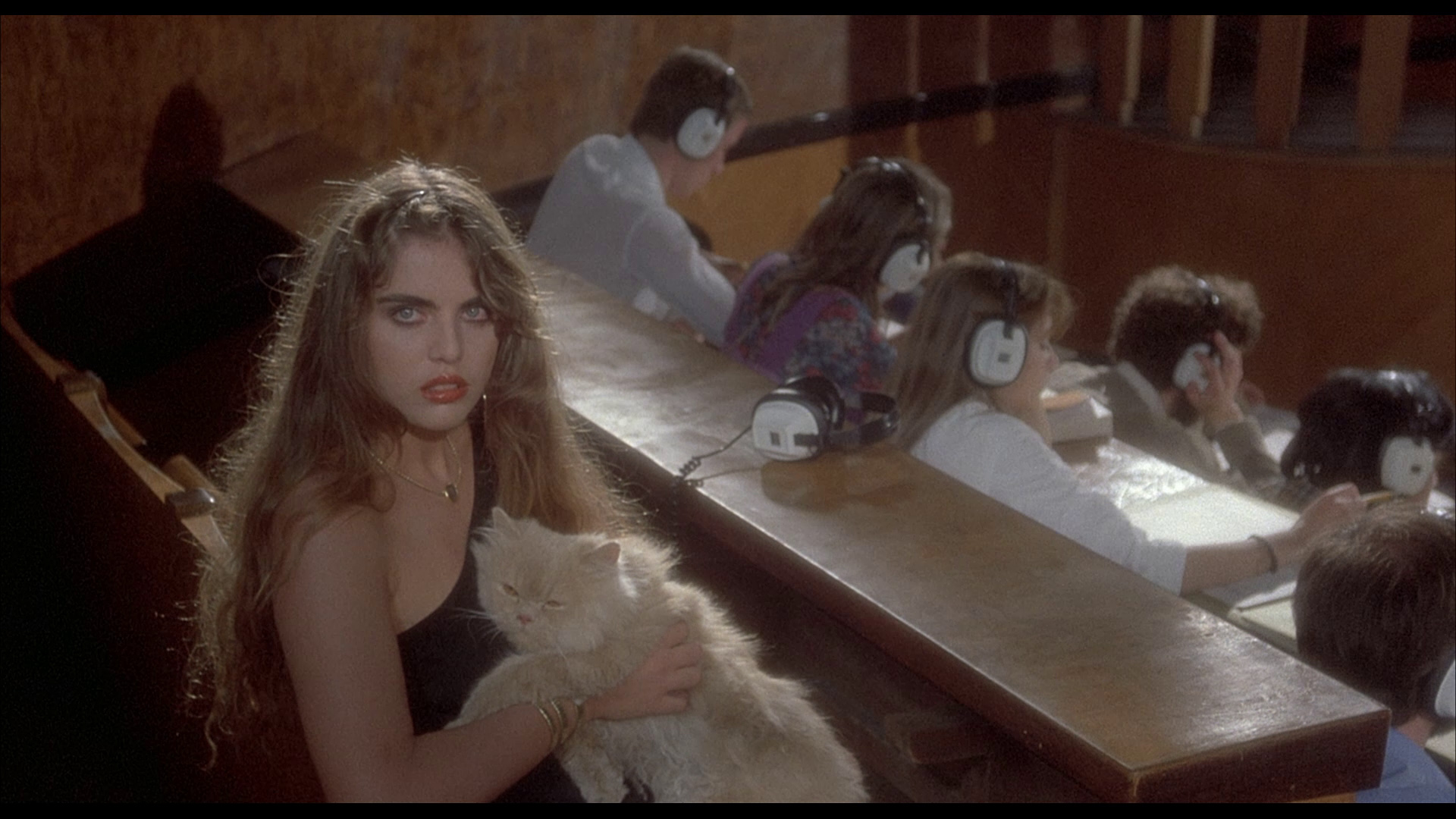 While Suspiria offered a fairly linear storyline around a central character drifting through a single maze of supernatural threats, Inferno complicates matters with a string of protagonists and two entire cities. The seemingly irrational construction baffled many critics and fans at the time who also targeted its seemingly stilted actors and cryptic dialogue, while defenders claimed the film operated solely by dream logic and
While Suspiria offered a fairly linear storyline around a central character drifting through a single maze of supernatural threats, Inferno complicates matters with a string of protagonists and two entire cities. The seemingly irrational construction baffled many critics and fans at the time who also targeted its seemingly stilted actors and cryptic dialogue, while defenders claimed the film operated solely by dream logic and  wasn't meant to be understood. Actually the film does make quite a bit of sense, particularly upon repeated viewings when all the various strands start to connect through symbolic association. (As a word of warning, some minor spoilers follow from now on; skip this paragraph if you haven't seen the film.) The frequent complaint that Mark is a weak, passive hero misses the point entirely; the fact that he's left standing at the end credits doesn't necessarily make him a hero at all. Like all the other men in the film, he's a helpless pawn, dressed throughout in drab, earthy colors, and from the moment we first see him in music class trying to read the lips of the beautiful Mother of Tears (played by the striking Ania Pieroni, also in Argento's Tenebrae but best known as the ill-fated babysitter in Lucio Fulci's House by the Cemetery), he's chosen to bear witness to the Mothers' mayhem. Note that on several occasions he could have easily been killed, but instead he's knocked out or dragged around before he finally figures out the secret "beneath the soles of your shoes." Then he inadvertently kills the still-living Varelli (who tries to poison him in a scene later reprised far more graphically in Phenomena), leaving the Mothers without a historian or an accomplice. Is Mark's journey into darkness "with moments of incredible light" over when he escapes the burning building, or has he been set up to take Varelli's place by telling their story? The possibly triumphant gesture of Tenebrarum/Death that leads into the closing credits certainly doesn't imply her destruction, but viewers can write the rest of the
wasn't meant to be understood. Actually the film does make quite a bit of sense, particularly upon repeated viewings when all the various strands start to connect through symbolic association. (As a word of warning, some minor spoilers follow from now on; skip this paragraph if you haven't seen the film.) The frequent complaint that Mark is a weak, passive hero misses the point entirely; the fact that he's left standing at the end credits doesn't necessarily make him a hero at all. Like all the other men in the film, he's a helpless pawn, dressed throughout in drab, earthy colors, and from the moment we first see him in music class trying to read the lips of the beautiful Mother of Tears (played by the striking Ania Pieroni, also in Argento's Tenebrae but best known as the ill-fated babysitter in Lucio Fulci's House by the Cemetery), he's chosen to bear witness to the Mothers' mayhem. Note that on several occasions he could have easily been killed, but instead he's knocked out or dragged around before he finally figures out the secret "beneath the soles of your shoes." Then he inadvertently kills the still-living Varelli (who tries to poison him in a scene later reprised far more graphically in Phenomena), leaving the Mothers without a historian or an accomplice. Is Mark's journey into darkness "with moments of incredible light" over when he escapes the burning building, or has he been set up to take Varelli's place by telling their story? The possibly triumphant gesture of Tenebrarum/Death that leads into the closing credits certainly doesn't imply her destruction, but viewers can write the rest of the  story just as easily themselves. Another often overlooked factor in Inferno is its sly wit, especially when it plays on expectations from the previous film. The maddest moment must surely be the twisted reprise of Suspiria's seeing eye dog attack in which another handicapped victim of the Mothers' wrath, crippled cat killer Kazanian, falls prey in a large public park not to a killer dog but a murderous hot dog vendor aided by hordes of bloodthirsty rats during a lunar eclipse.
story just as easily themselves. Another often overlooked factor in Inferno is its sly wit, especially when it plays on expectations from the previous film. The maddest moment must surely be the twisted reprise of Suspiria's seeing eye dog attack in which another handicapped victim of the Mothers' wrath, crippled cat killer Kazanian, falls prey in a large public park not to a killer dog but a murderous hot dog vendor aided by hordes of bloodthirsty rats during a lunar eclipse.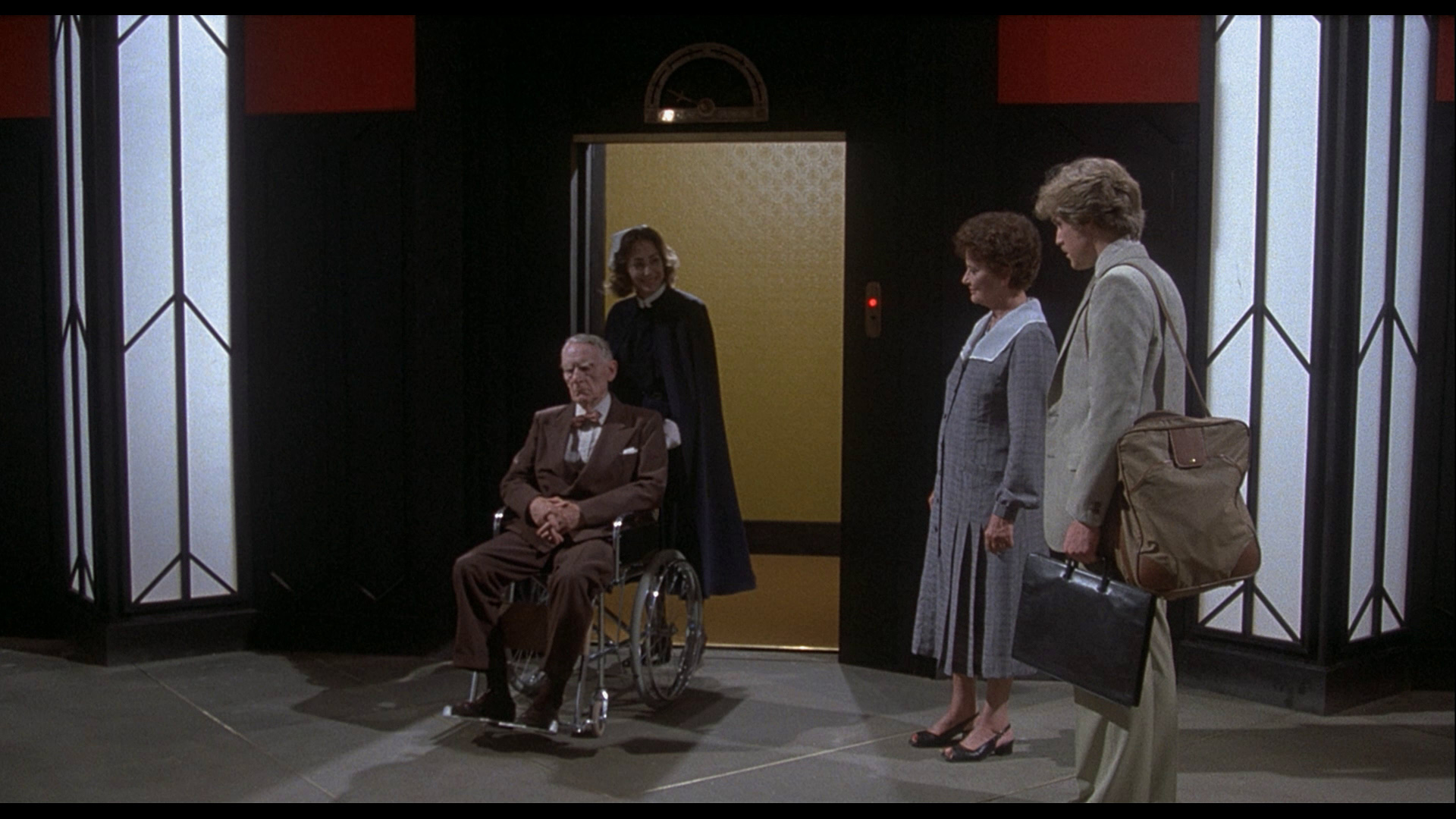
Even if a viewer doesn't feel up to decoding the film's labyrinth of color coding and arcane references, Inferno is packed with a number of astonishing scenes that rank among Argento's best: the underwater ballroom, Rose's harrowing exploration of an attic, Sara's last fateful listening to Verdi's Nabucco with a bloody punchline, Mark's quizzical peek into the apartment's ventilation shaft, and the grisly beginning of the climactic conflagration involving eye gouging and a misplaced candle. It's a bit jarring to hear actor-turned-painter Leigh McCloskey (before joining Dallas) dubbed with someone else's voice, but he's otherwise fine; however, Irene Miracle (hot off of Midnight Express and The Night Train Murders) really shines as Rose, making for an intriguing and extremely delicate, sympathetic heroine who should have been given a bit more screen time. Ditto for the equally beautiful Giorgi; it would have been interesting to find a way to pair the characters up. The divisive but striking music score by Keith Emerson (of Emerson Lake & Palmer fame) ranges from a fragile main piano theme to wild prog rock taxi music to a barnstorming piece of chorus rock that finally surges up during the finale with unforgettable results.
Though it received fairly healthy theatrical play in Europe and Asia, Inferno first made it to America in 1987 via Key Video, a Fox subsidiary whose typo on the sleeve claiming an erroneous 83 minute running time fueled rumors that the film was cut. In fact, the US version has always been complete, running a full 107 minutes. Unfortunately the same couldn't 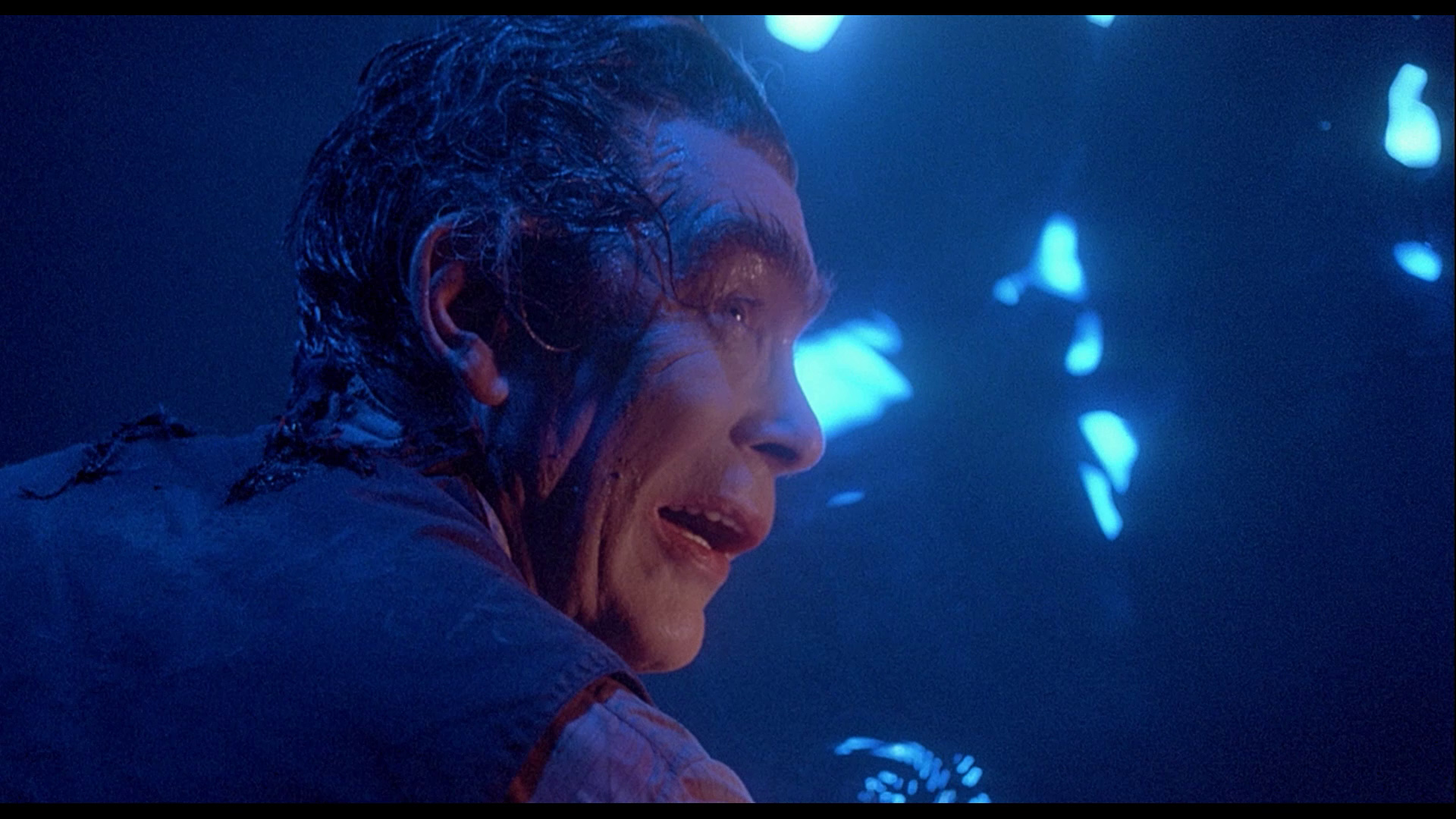 be said for Britain, where Fox's VHS release was trimmed by a few seconds to omit some "animal cruelty" at the somewhat ridiculous behest of the BBFC (the mouse chomping and kitty bashing against a chair, the latter obviously fake; apparently the lizard chewing on a moth was perfectly fine). The Anchor Bay disc was very good for its time, with a healthy anamorphic transfer, a 5.1 remix that did what it could with the limited Dolby Stereo soundtrack, and an informative and endearing video interview segment and video intro. His outlook on the film seems to have improved somewhat over the years, considering all of the painful associations he had
be said for Britain, where Fox's VHS release was trimmed by a few seconds to omit some "animal cruelty" at the somewhat ridiculous behest of the BBFC (the mouse chomping and kitty bashing against a chair, the latter obviously fake; apparently the lizard chewing on a moth was perfectly fine). The Anchor Bay disc was very good for its time, with a healthy anamorphic transfer, a 5.1 remix that did what it could with the limited Dolby Stereo soundtrack, and an informative and endearing video interview segment and video intro. His outlook on the film seems to have improved somewhat over the years, considering all of the painful associations he had  (Argento was plagued with hepatitis during filming, for example). Lamberto Bava also appears to offer his own thoughts about working as assistant director. The disc also includes a spectacular but spoiler-filled European trailer, and an attractive but relatively skimpy still gallery and talent bio section. A subsequent Italian DVD from Fox caused some controversy as it featured a much darker, more saturated color scheme with deeper reds and blues which more closer resembled Suspiria, compared to rather powdery and sometimes pastel colors of the Anchor Bay disc; this version featured the English and Italian audio tracks (the latter in mono) with optional English subtitles and the same trailer.
(Argento was plagued with hepatitis during filming, for example). Lamberto Bava also appears to offer his own thoughts about working as assistant director. The disc also includes a spectacular but spoiler-filled European trailer, and an attractive but relatively skimpy still gallery and talent bio section. A subsequent Italian DVD from Fox caused some controversy as it featured a much darker, more saturated color scheme with deeper reds and blues which more closer resembled Suspiria, compared to rather powdery and sometimes pastel colors of the Anchor Bay disc; this version featured the English and Italian audio tracks (the latter in mono) with optional English subtitles and the same trailer.
Fortunately any debate between the DVDs can be set aside in light of the film's not-surprising upgrade to Blu-ray early in the format's history. First out of the gate was Arrow's region-free Blu-ray release in the UK, which happens to be the first time it's ever been uncut there as well. The image quality is simply stunning; you've never seen Inferno like this in a home theater before. Countless little touches pop out in nearly every shot, from quirky details in the production design to expressive splashes of color in the background. After watching it under conditions like this, one could easily argue that this may be the most beautifully shot horror film ever made. English audio is presented in both the original Dolby Stereo track (same as usual) and a 5.1 DTS HD version that features stronger separation for the music score and, most interestingly, much clearer representations of several background lines of dialogue that are now fully intelligible, including some paranoid mumblings by the other apartment dwellers, the evil hidden voice in the Roman library, and the cops shouting orders to each other during the climactic blaze. The mono Italian track sounds very brash and shrill in comparison, but it's an interesting variation and worth watching as some of the dialogue (especially Kazanian's) is delivered with an entirely different tone and meaning. The English 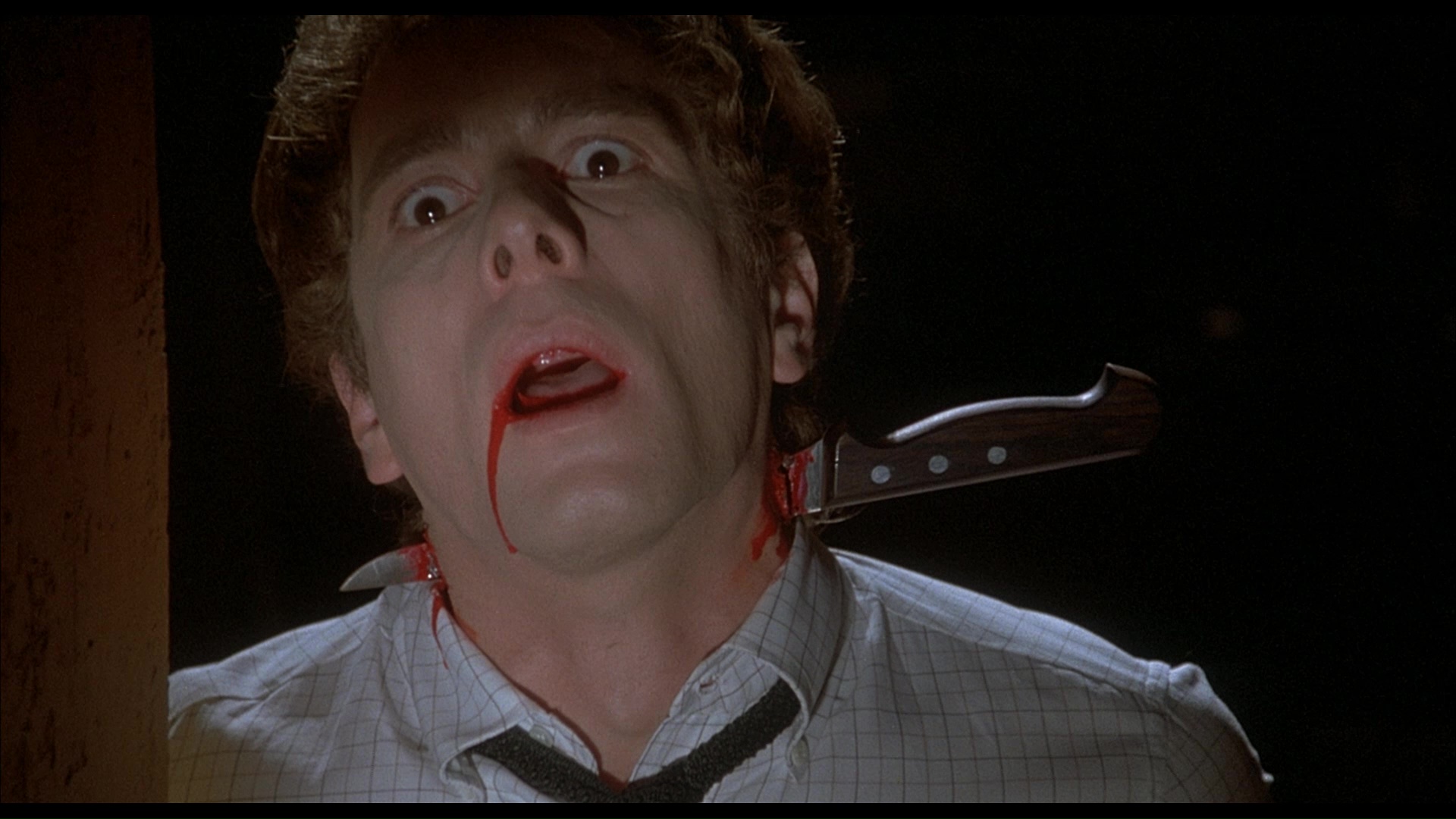 subtitles can either be played as literal dubtitles or a much more accurate, interesting translation from the Italian dialogue. Some have noted that there may be some noise reduction applied here, but if so, it's still a ravishing appearance; more on that below.
subtitles can either be played as literal dubtitles or a much more accurate, interesting translation from the Italian dialogue. Some have noted that there may be some noise reduction applied here, but if so, it's still a ravishing appearance; more on that below. 
The Arrow Blu-ray contains a wealth of interesting extras including a new intro by Daria Nicolodi and a 15-minute minute featurette, "Dario's Inferno," with new comments from Argento about the making of the film, its original inception during a New York trip, the strange screening experience he had with Fox head Sherry Lansing, and the reasons for the long delay in making the third film in the series, the poorly-received Mother of Tears. "Acting in Hot Water" features Nicolodi recalling her contributions to the writing and concepts of both films, the background she had in mind for her character of Elise, and her reasons for appearing as a CGI ghost in Mother of Tears and her mixed reaction to the finished product. "The Other Mother: Making The Black Cat" features frequent Argento collaborator Luigi Cozzi discussing his ill-fated unofficial Three Mothers film from 1989, which made a very belated Blu-ray appearance later from Severin. The featurette closes with some amusing but questionably handled comments from Argento and Nicolodi blatantly contradicting Cozzi's earlier statements. A shot-on-video Q&A from a New Beverly screening of the film is easily the most entertaining bonus in the set, with Video Watchdog editor Tim Lucas offering some comments about Mario Bava's uncredited contributions to the special effects (including Mater Tenebrarum's subtle but dazzling "disappearance into darkness"), which make this the last film in Bava's filmography. Irene Miracle then appears to offer some amusing and often fascinating comments about her odd casting process and the fact that she wasn't really directed much by Argento himself on the set. Finally Keith Emerson joins them and proves himself to be a rowdy and raucous guy, offering lots of stories about how he got the job and the unorthodox ways he incorporated Verdi into his score. Everything but the Q&A is introduced with clever but extremely overlong animated segments inspired by the film, similar to Arrow's presentation on City of the Living Dead. Easter egg hunters on the main screen can also find an additional Bava-related bonus with a little creative clicking. Disc two, a standard DVD, rehashes the great but wildly overexposed Dario Argento: An Eye for Horror one-hour doc, along with a the same Argento/Lamberto Bava featurette from the Anchor Bay disc as well as the international and Spanish theatrical trailers (basically the same except for the text cards). More interestingly, the DVD also contains "The Complete Dario Argento Trailer Gallery," which covers 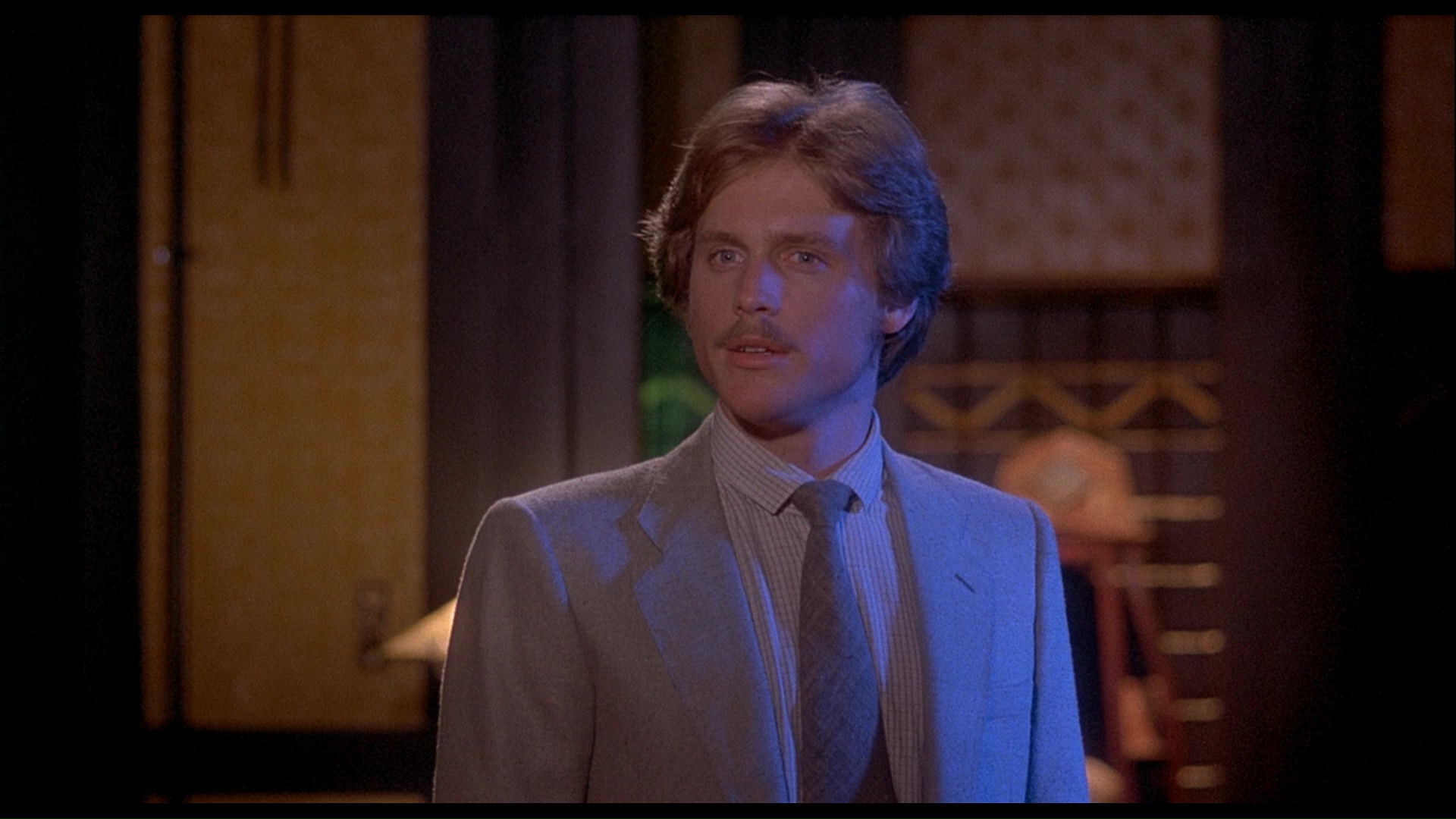 everything from The Bird with the Crystal Plumage to Five Days of Milan to Mother Of Tears and Dawn of the Dead. (Sorry, no Giallo here.) The real prize here is an immaculate, 2.35:1 presentation of the American trailer to Four Flies on Grey Velvet, which has only been
everything from The Bird with the Crystal Plumage to Five Days of Milan to Mother Of Tears and Dawn of the Dead. (Sorry, no Giallo here.) The real prize here is an immaculate, 2.35:1 presentation of the American trailer to Four Flies on Grey Velvet, which has only been 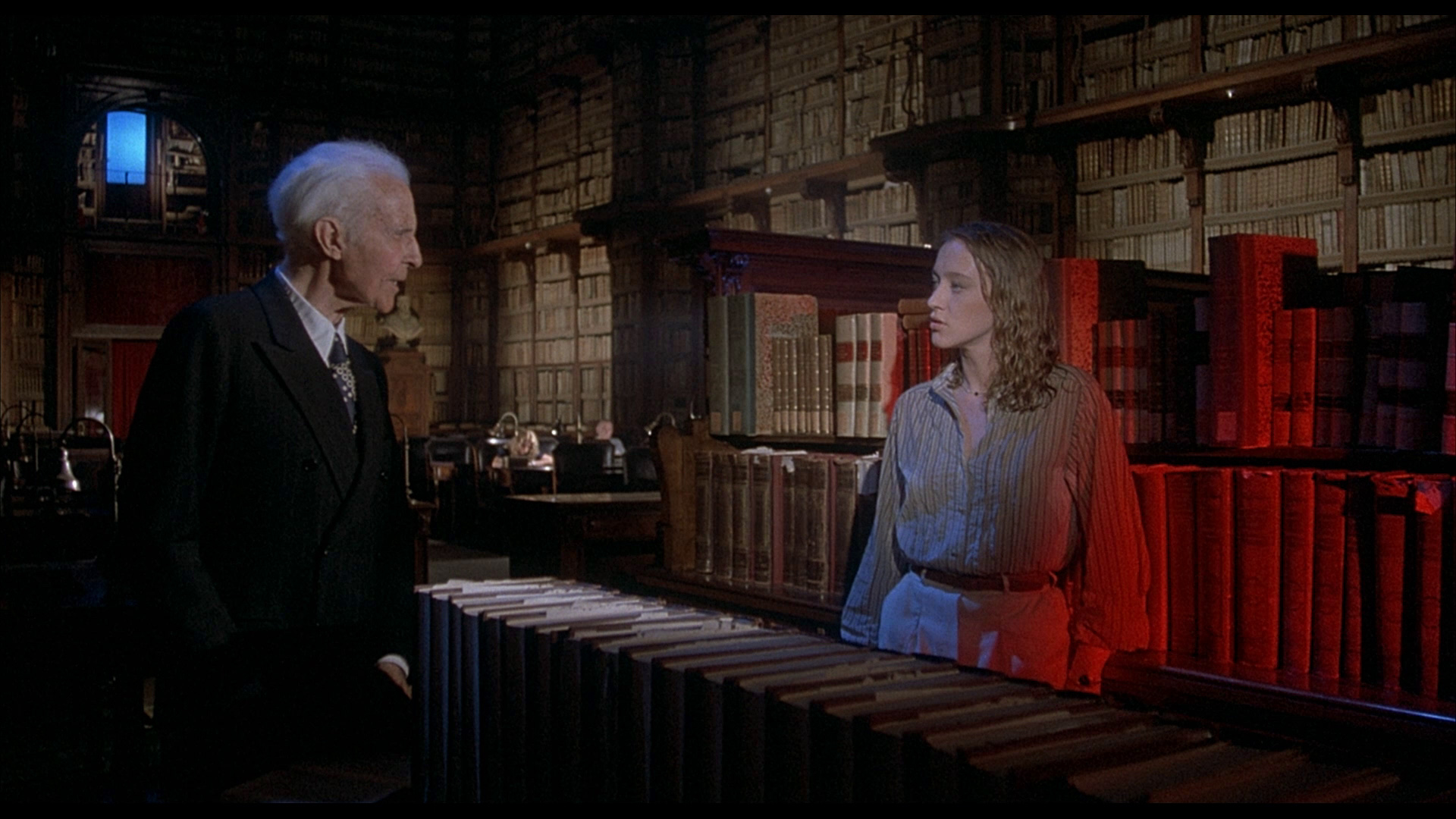 available elsewhere in a truly cruddy-looking, cropped edition on both the Mya disc and various trailer comps. The set comes packaged with a reversible sleeve containing four cover options (original skull poster art, Greek and Spanish video cover art, and newly commissioned, ass-heavy UK art), a two-sided foldout poster, excellent liner notes by Alan Jones, and a pack of still postcards. To say you get your money's worth here would be a major understatement, and it's a crying shame Suspiria has fared so disastrously in comparison to date.
available elsewhere in a truly cruddy-looking, cropped edition on both the Mya disc and various trailer comps. The set comes packaged with a reversible sleeve containing four cover options (original skull poster art, Greek and Spanish video cover art, and newly commissioned, ass-heavy UK art), a two-sided foldout poster, excellent liner notes by Alan Jones, and a pack of still postcards. To say you get your money's worth here would be a major understatement, and it's a crying shame Suspiria has fared so disastrously in comparison to date.
Many assumed that Blue Underground's announced Blu-ray of Inferno following the Arrow would more closely resemble their DVD version, though that turns out not to be the case. This is a very different presentation in some respects, though it still looks excellent. Grain is definitely more pronounced and film-like, while the color scheme is a few notches colder with less rose and much more blue, particularly in the nocturnal sequences; black levels are also significantly deeper. The detail level is excellent, perhaps a hair better than the Arrow (which is most noticeable in the library scene in Rome). Which version fans prefer will most likely be a matter of individual taste; given that they feature almost entirely exclusive extras, it's safe to say that even casual Argento buffs will want both in their collections. The usual Blue Underground 7.1 DTS-HD mix is the default here and sounds fine, though this still sounds a lot like an early two-channel Dolby Stereo film. Emerson's score is nicely separated, but don't expect audio fireworks from each channel. 5.1 and 2.0 options are also included, though the first one is going to be preferable if you have a decent sound system or better. The Italian audio is carried over here, once again in mono but sounding slightly more robust with less reedy music quality; English, French, and Spanish optional subtitles are included, though it's worth noting here that, unlike the Arrow, the English ones are SDH (subtitled for the deaf and hard of hearing), which means that sound effects and vocal inflections are included as part of the subs, too. The Argento/Bava featurette, trailer, and Argento bio are carried over here along with two great new extras. McCloskey appears for a very solid interview called "Art & Alchemy" in which he talks about his transition to acting (with the immortal TV movies Dawn: Portrait of a Teenage Runaway and Alexander: The Other Side of Dawn), talks about his art career, and shows off a nifty drawing he made during  the making of Inferno reflecting the terrain of the Three Mothers. He also talks about his views on alchemy and his impressions of Argento, whom he had to communicate with through English-speaking brother Claudio. Alas, he makes no mention of Fraternity Vacation or Hamburger: The Motion Picture. Then Irene Miracle appears
the making of Inferno reflecting the terrain of the Three Mothers. He also talks about his views on alchemy and his impressions of Argento, whom he had to communicate with through English-speaking brother Claudio. Alas, he makes no mention of Fraternity Vacation or Hamburger: The Motion Picture. Then Irene Miracle appears 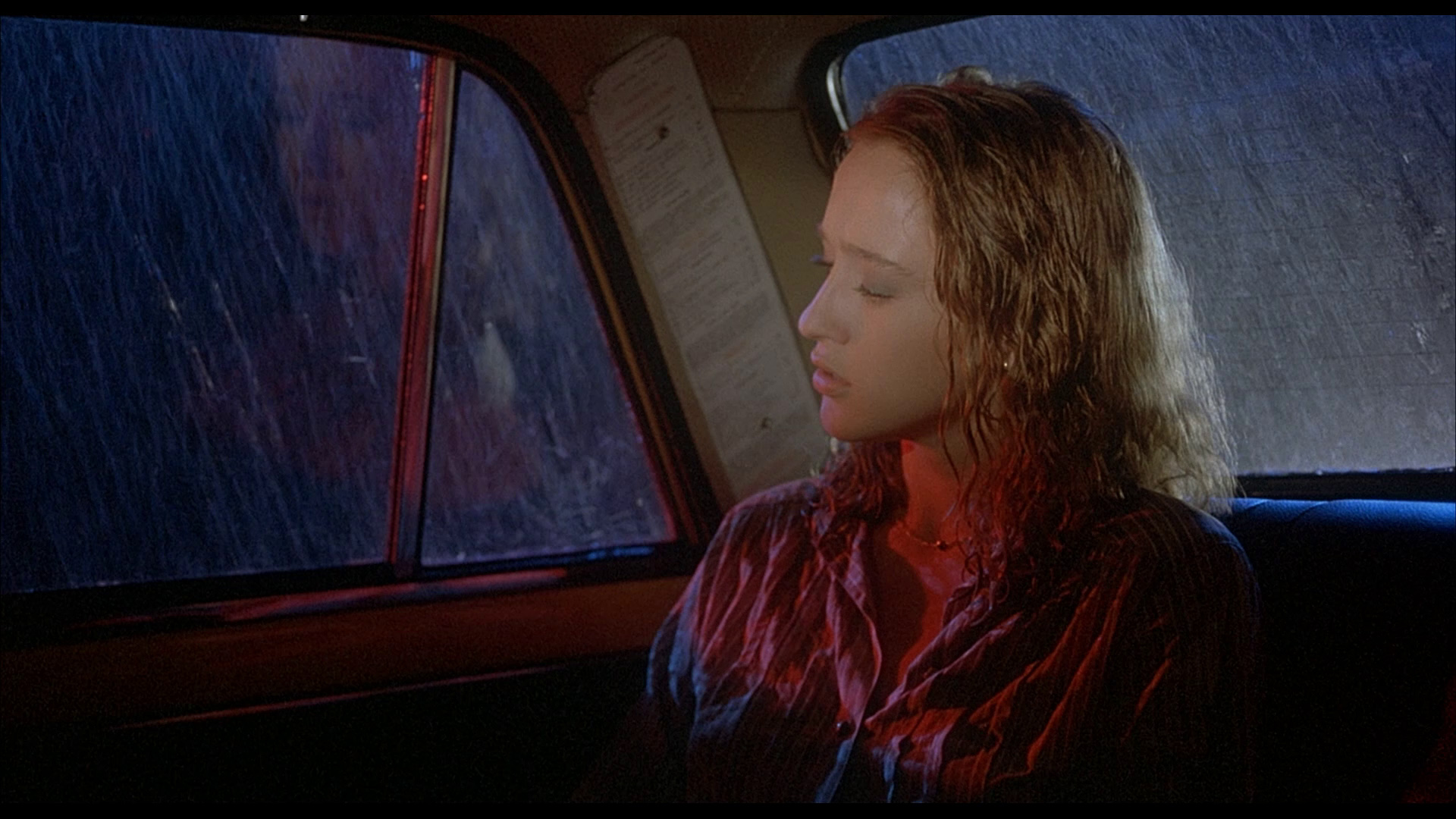 for a new featurette, "Reflections of Rose," which reiterates a lot of material from her New Beverly chat on the other disc but also contains some great new tidbits, especially her memories of meeting Michelangelo Antonioni and working on The Night Train Murders.
for a new featurette, "Reflections of Rose," which reiterates a lot of material from her New Beverly chat on the other disc but also contains some great new tidbits, especially her memories of meeting Michelangelo Antonioni and working on The Night Train Murders.
Enough Inferno on Blu-ray for you? Of course not! There’s also a French one, but since that’s very difficult to find and has forced French subtitles, you can skip that one. The Japanese release has no particularly interesting extras and is wildly expensive, so pass on that one, too. In the weirdest twist of fate, Camera Obscura began preparing a German Blu-ray that wound up being completed and released by Koch instead; it was produced in Germany but had to be distributed elsewhere as an import title since the film itself is technically still illegal in that country. (Really!) Overall the Koch wins hands down in the quality department (and is the source of the frame grabs in the body of this review); you don’t get a 5.1 mix, but the original stereo one here for the English track sounds just fine, and once again you get the Italian version with optional English and German subtitles. As for the transfer, opinions will vary based on personal preference but this is the sharpest, most cinematic-looking option out there, with a sliver of additional image visible on all the sides and colors very similar to the Arrow one. And yes, once again there’s an almost entirely different set of extras; Camera Obscura regulars Christian Kessler and Marcus Stiglegger turn in another fantastic audio commentary (German with optional English subtitles) balancing fact and critical observation, while Argento and cinematographer Romano Albani (who only gave the thumbs up to this particular release) provide video intros. The second platter in this triple-disc set is a standard DVD with a spectacular 98-minute documentary about the film, “Of Fire and Darkness,” with Albani, Lamberto Bava, Cozzi, FX artist Fabio Traversari, and make-up artist Pierantonio Mecacci going into an insane amount of detail about the making of the film. Then Argento, brother Claudio, Giorgi, and Mastelloni get their briefer say for under half an hour in “L’inferno delle Tre Madri,” while critics Antonio Tentori and Antonio Bruschini (another familiar Camera Obscura face) attempt to deconstruct the film in “Critics on Fire.” The familiar Miracle/Emerson Q&A pops up again here, rounded out with a location then-and-now featurette and the English, Spanish, and German trailers (which are all pretty much the same content-wise but vary in quality). This one’s a bit pricier than the UK and US options, but Argento fanatics will find it well worth the investment.
Koch Media
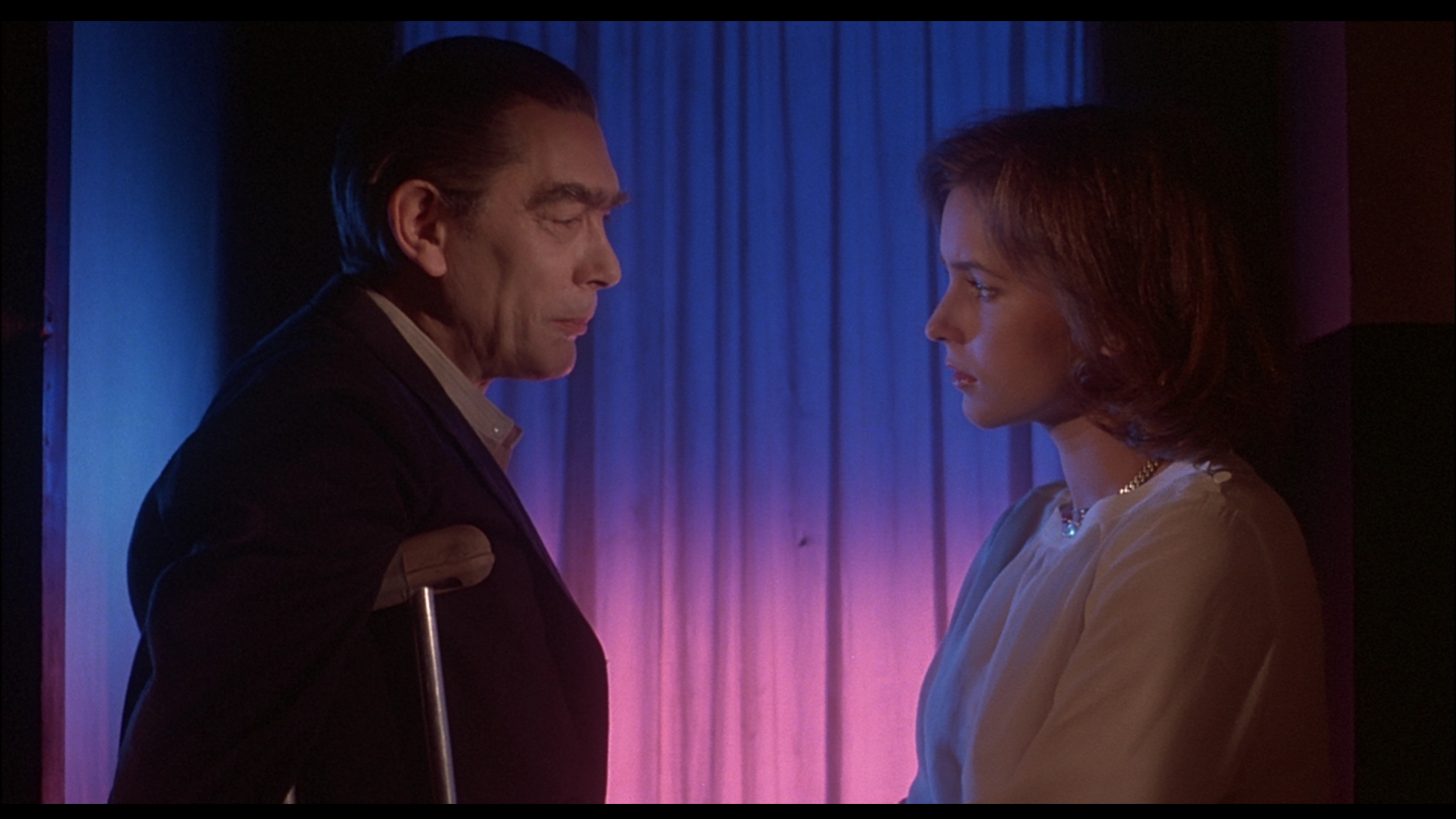
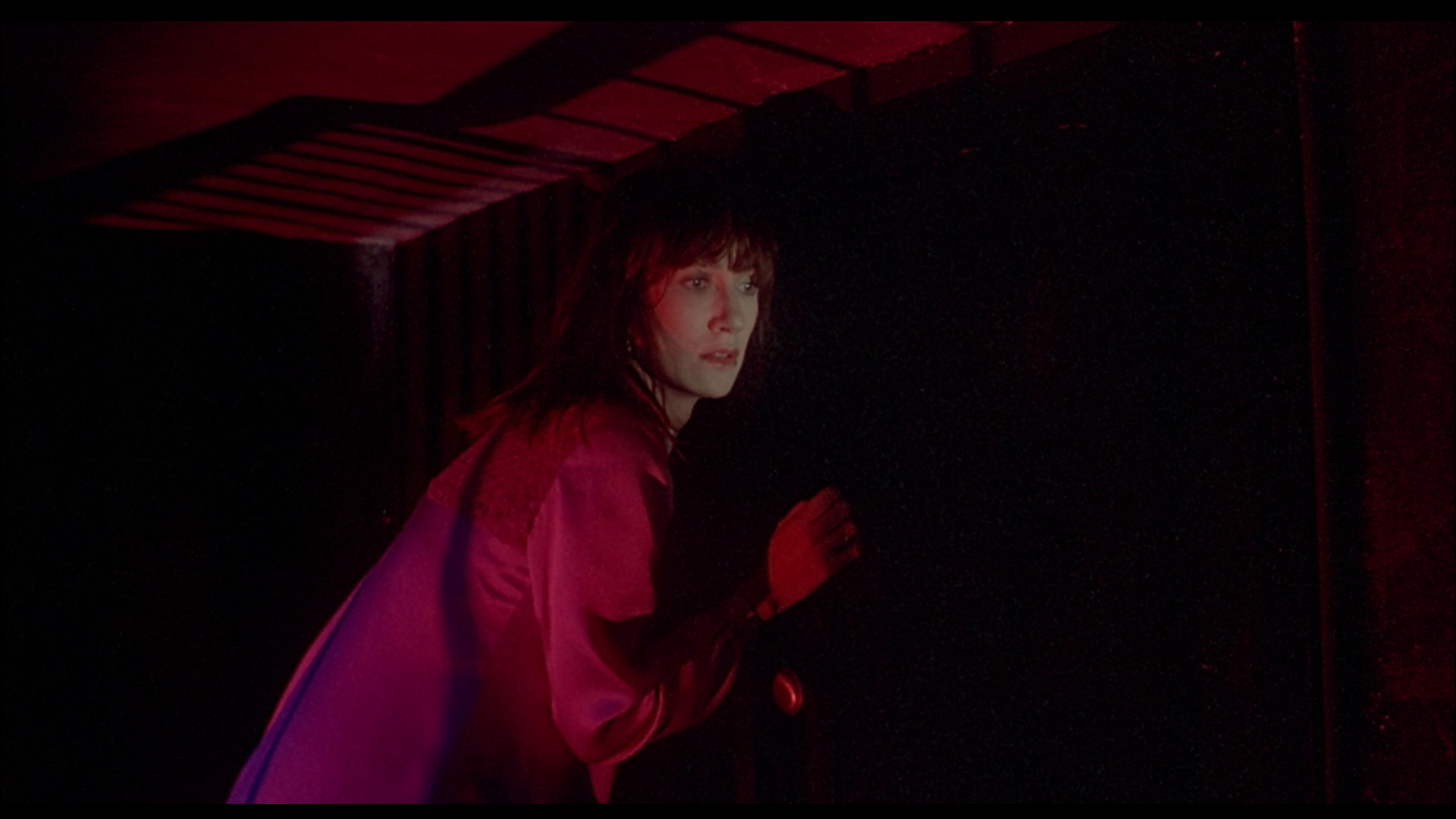
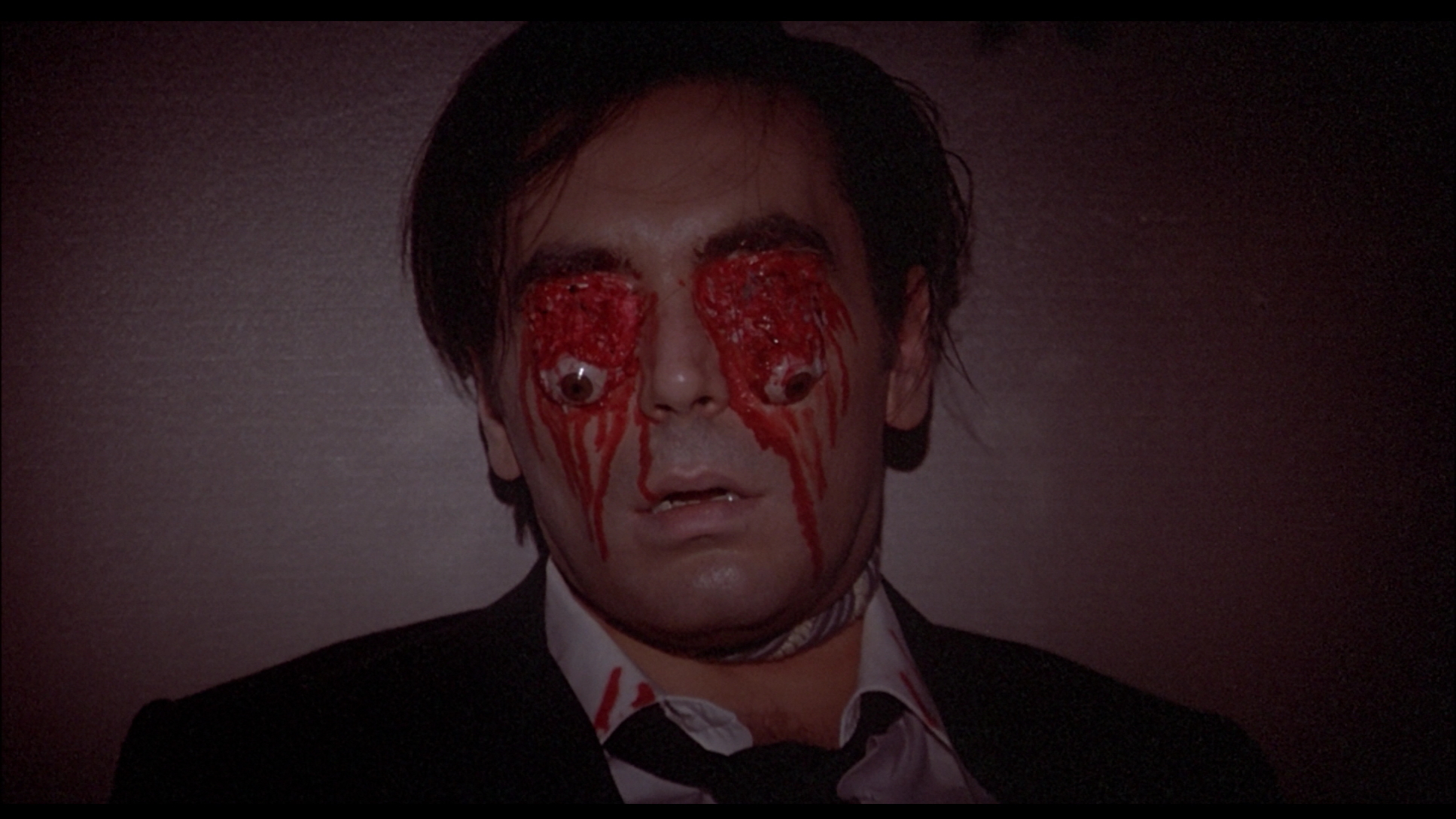
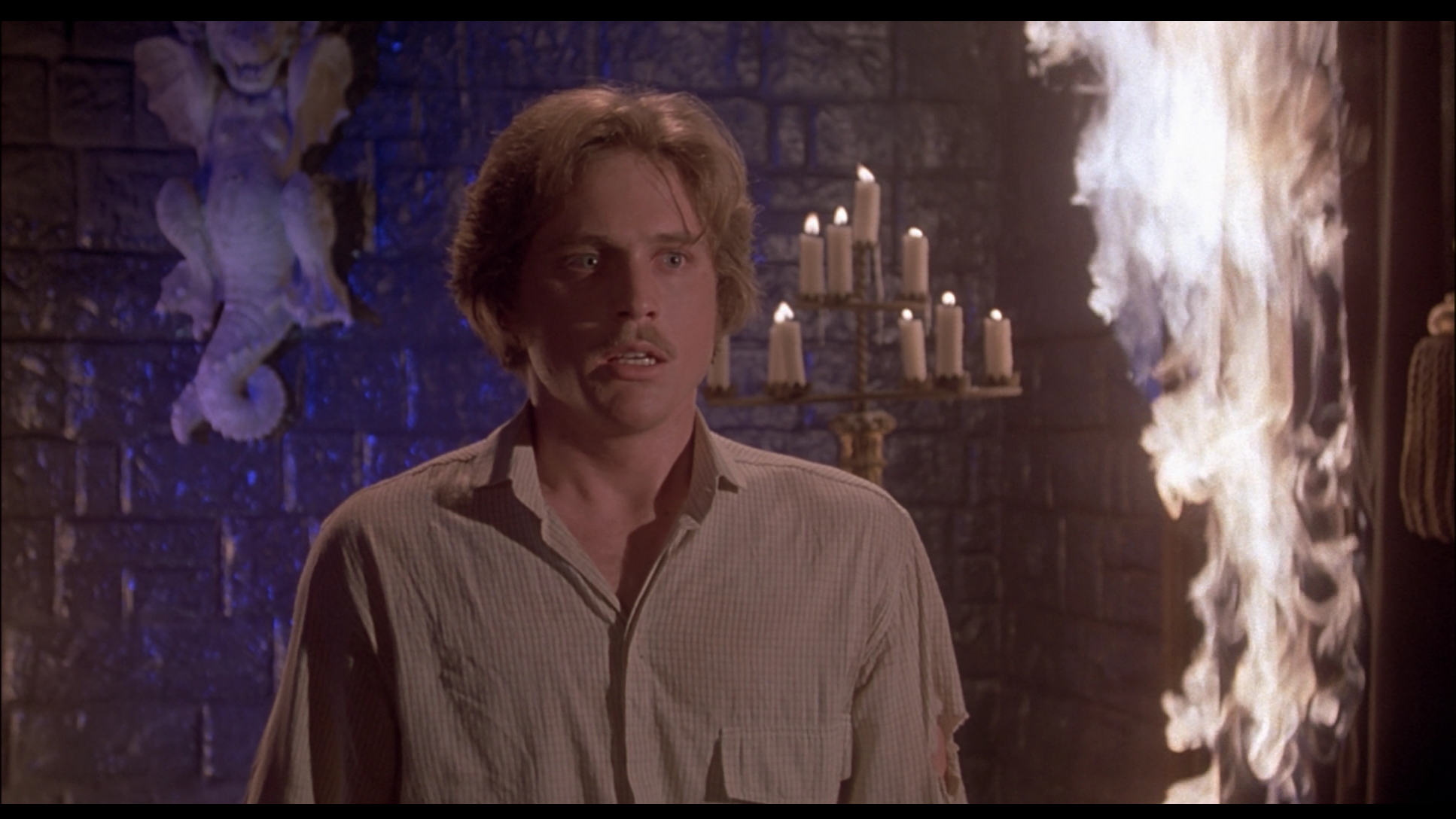
Blue Underground

 the worldwide success of his
the worldwide success of his  Gothic witch masterpiece Suspiria, director Dario Argento decided to create his first sequel by expanding that film's mythos into a transcontinental exercise in dark magic running rampant through the lives of several ill-fated characters. The result, Inferno, is a far more elaborate and challenging film that confounded 20th Century-Fox and remained unseen in the U.S. for nearly a decade. Nevertheless, it managed to gain a healthy cult following and is now regarded as one of the director's most important works.
Gothic witch masterpiece Suspiria, director Dario Argento decided to create his first sequel by expanding that film's mythos into a transcontinental exercise in dark magic running rampant through the lives of several ill-fated characters. The result, Inferno, is a far more elaborate and challenging film that confounded 20th Century-Fox and remained unseen in the U.S. for nearly a decade. Nevertheless, it managed to gain a healthy cult following and is now regarded as one of the director's most important works. While Suspiria offered a fairly linear storyline around a central character drifting through a single maze of supernatural threats, Inferno complicates matters with a string of protagonists and two entire cities. The seemingly irrational construction baffled many critics and fans at the time who also targeted its seemingly stilted actors and cryptic dialogue, while defenders claimed the film operated solely by dream logic and
While Suspiria offered a fairly linear storyline around a central character drifting through a single maze of supernatural threats, Inferno complicates matters with a string of protagonists and two entire cities. The seemingly irrational construction baffled many critics and fans at the time who also targeted its seemingly stilted actors and cryptic dialogue, while defenders claimed the film operated solely by dream logic and  wasn't meant to be understood. Actually the film does make quite a bit of sense, particularly upon repeated viewings when all the various strands start to connect through symbolic association. (As a word of warning, some minor spoilers follow from now on; skip this paragraph if you haven't seen the film.) The frequent complaint that Mark is a weak, passive hero misses the point entirely; the fact that he's left standing at the end credits doesn't necessarily make him a hero at all. Like all the other men in the film, he's a helpless pawn, dressed throughout in drab, earthy colors, and from the moment we first see him in music class trying to read the lips of the beautiful Mother of Tears (played by the striking Ania Pieroni, also in Argento's Tenebrae but best known as the ill-fated babysitter in Lucio Fulci's House by the Cemetery), he's chosen to bear witness to the Mothers' mayhem. Note that on several occasions he could have easily been killed, but instead he's knocked out or dragged around before he finally figures out the secret "beneath the soles of your shoes." Then he inadvertently kills the still-living Varelli (who tries to poison him in a scene later reprised far more graphically in Phenomena), leaving the Mothers without a historian or an accomplice. Is Mark's journey into darkness "with moments of incredible light" over when he escapes the burning building, or has he been set up to take Varelli's place by telling their story? The possibly triumphant gesture of Tenebrarum/Death that leads into the closing credits certainly doesn't imply her destruction, but viewers can write the rest of the
wasn't meant to be understood. Actually the film does make quite a bit of sense, particularly upon repeated viewings when all the various strands start to connect through symbolic association. (As a word of warning, some minor spoilers follow from now on; skip this paragraph if you haven't seen the film.) The frequent complaint that Mark is a weak, passive hero misses the point entirely; the fact that he's left standing at the end credits doesn't necessarily make him a hero at all. Like all the other men in the film, he's a helpless pawn, dressed throughout in drab, earthy colors, and from the moment we first see him in music class trying to read the lips of the beautiful Mother of Tears (played by the striking Ania Pieroni, also in Argento's Tenebrae but best known as the ill-fated babysitter in Lucio Fulci's House by the Cemetery), he's chosen to bear witness to the Mothers' mayhem. Note that on several occasions he could have easily been killed, but instead he's knocked out or dragged around before he finally figures out the secret "beneath the soles of your shoes." Then he inadvertently kills the still-living Varelli (who tries to poison him in a scene later reprised far more graphically in Phenomena), leaving the Mothers without a historian or an accomplice. Is Mark's journey into darkness "with moments of incredible light" over when he escapes the burning building, or has he been set up to take Varelli's place by telling their story? The possibly triumphant gesture of Tenebrarum/Death that leads into the closing credits certainly doesn't imply her destruction, but viewers can write the rest of the  story just as easily themselves. Another often overlooked factor in Inferno is its sly wit, especially when it plays on expectations from the previous film. The maddest moment must surely be the twisted reprise of Suspiria's seeing eye dog attack in which another handicapped victim of the Mothers' wrath, crippled cat killer Kazanian, falls prey in a large public park not to a killer dog but a murderous hot dog vendor aided by hordes of bloodthirsty rats during a lunar eclipse.
story just as easily themselves. Another often overlooked factor in Inferno is its sly wit, especially when it plays on expectations from the previous film. The maddest moment must surely be the twisted reprise of Suspiria's seeing eye dog attack in which another handicapped victim of the Mothers' wrath, crippled cat killer Kazanian, falls prey in a large public park not to a killer dog but a murderous hot dog vendor aided by hordes of bloodthirsty rats during a lunar eclipse.
 be said for Britain, where Fox's VHS release was trimmed by a few seconds to omit some "animal cruelty" at the somewhat ridiculous behest of the BBFC (the mouse chomping and kitty bashing against a chair, the latter obviously fake; apparently the lizard chewing on a moth was perfectly fine). The Anchor Bay disc was very good for its time, with a healthy anamorphic transfer, a 5.1 remix that did what it could with the limited Dolby Stereo soundtrack, and an informative and endearing video interview segment and video intro. His outlook on the film seems to have improved somewhat over the years, considering all of the painful associations he had
be said for Britain, where Fox's VHS release was trimmed by a few seconds to omit some "animal cruelty" at the somewhat ridiculous behest of the BBFC (the mouse chomping and kitty bashing against a chair, the latter obviously fake; apparently the lizard chewing on a moth was perfectly fine). The Anchor Bay disc was very good for its time, with a healthy anamorphic transfer, a 5.1 remix that did what it could with the limited Dolby Stereo soundtrack, and an informative and endearing video interview segment and video intro. His outlook on the film seems to have improved somewhat over the years, considering all of the painful associations he had  (Argento was plagued with hepatitis during filming, for example). Lamberto Bava also appears to offer his own thoughts about working as assistant director. The disc also includes a spectacular but spoiler-filled European trailer, and an attractive but relatively skimpy still gallery and talent bio section. A subsequent Italian DVD from Fox caused some controversy as it featured a much darker, more saturated color scheme with deeper reds and blues which more closer resembled Suspiria, compared to rather powdery and sometimes pastel colors of the Anchor Bay disc; this version featured the English and Italian audio tracks (the latter in mono) with optional English subtitles and the same trailer.
(Argento was plagued with hepatitis during filming, for example). Lamberto Bava also appears to offer his own thoughts about working as assistant director. The disc also includes a spectacular but spoiler-filled European trailer, and an attractive but relatively skimpy still gallery and talent bio section. A subsequent Italian DVD from Fox caused some controversy as it featured a much darker, more saturated color scheme with deeper reds and blues which more closer resembled Suspiria, compared to rather powdery and sometimes pastel colors of the Anchor Bay disc; this version featured the English and Italian audio tracks (the latter in mono) with optional English subtitles and the same trailer. subtitles can either be played as literal dubtitles or a much more accurate, interesting translation from the Italian dialogue. Some have noted that there may be some noise reduction applied here, but if so, it's still a ravishing appearance; more on that below.
subtitles can either be played as literal dubtitles or a much more accurate, interesting translation from the Italian dialogue. Some have noted that there may be some noise reduction applied here, but if so, it's still a ravishing appearance; more on that below. 
 everything from The Bird with the Crystal Plumage to Five Days of Milan to Mother Of Tears and Dawn of the Dead. (Sorry, no Giallo here.) The real prize here is an immaculate, 2.35:1 presentation of the American trailer to Four Flies on Grey Velvet, which has only been
everything from The Bird with the Crystal Plumage to Five Days of Milan to Mother Of Tears and Dawn of the Dead. (Sorry, no Giallo here.) The real prize here is an immaculate, 2.35:1 presentation of the American trailer to Four Flies on Grey Velvet, which has only been  available elsewhere in a truly cruddy-looking, cropped edition on both the Mya disc and various trailer comps. The set comes packaged with a reversible sleeve containing four cover options (original skull poster art, Greek and Spanish video cover art, and newly commissioned, ass-heavy UK art), a two-sided foldout poster, excellent liner notes by Alan Jones, and a pack of still postcards. To say you get your money's worth here would be a major understatement, and it's a crying shame Suspiria has fared so disastrously in comparison to date.
available elsewhere in a truly cruddy-looking, cropped edition on both the Mya disc and various trailer comps. The set comes packaged with a reversible sleeve containing four cover options (original skull poster art, Greek and Spanish video cover art, and newly commissioned, ass-heavy UK art), a two-sided foldout poster, excellent liner notes by Alan Jones, and a pack of still postcards. To say you get your money's worth here would be a major understatement, and it's a crying shame Suspiria has fared so disastrously in comparison to date.  the making of Inferno reflecting the terrain of the Three Mothers. He also talks about his views on alchemy and his impressions of Argento, whom he had to communicate with through English-speaking brother Claudio. Alas, he makes no mention of Fraternity Vacation or Hamburger: The Motion Picture. Then Irene Miracle appears
the making of Inferno reflecting the terrain of the Three Mothers. He also talks about his views on alchemy and his impressions of Argento, whom he had to communicate with through English-speaking brother Claudio. Alas, he makes no mention of Fraternity Vacation or Hamburger: The Motion Picture. Then Irene Miracle appears  for a new featurette, "Reflections of Rose," which reiterates a lot of material from her New Beverly chat on the other disc but also contains some great new tidbits, especially her memories of meeting Michelangelo Antonioni and working on The Night Train Murders.
for a new featurette, "Reflections of Rose," which reiterates a lot of material from her New Beverly chat on the other disc but also contains some great new tidbits, especially her memories of meeting Michelangelo Antonioni and working on The Night Train Murders.




